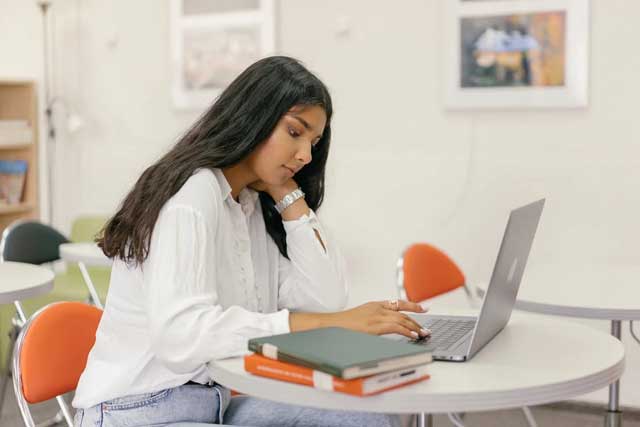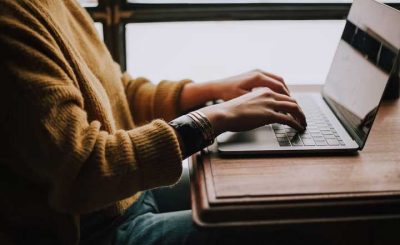Finding innovative uses for technology in the classroom may ease a teacher’s workload while simultaneously increasing students’ interest and participation in class. There is no limit to the ways technology can be used in the classroom to make it a better place to learn. It can help teachers and students talk to each other and organize timetables. It can also be used to improve presentations and instruction with media and visuals.
How To Use Technology Effectively in the Classroom?
Here are a few examples of how you can utilize technology in the classroom to improve student learning.
Learning Games
Spending hours playing typing games in the computer lab of my primary school is solely responsible for my current level of typing proficiency. The games were fantastic, and the programs were really engaging. But more importantly, they made using a computer exciting and joyful for me. Games also established a foundation for all following computer education. Gamified learning technologies can be beneficial to making education more enjoyable for students.
Virtual Field Trips
Digital field excursions are becoming increasingly popular, beneficial, and cost-effective for educators looking for new ways to incorporate technology into the classroom. Virtual field trips to national parks, woods, and even worldwide sites are now possible with Google Street View and other comparable apps. By the way, after such trips students say “I managed to complete my paper much faster. It earned me a top grade, just like when I pay someone to do my assignment for me.” To pique students’ interest in a topic or area, give them a virtual tour of the Grand Canyon or the Statue of Liberty.
Social Media Integration
Incorporating social media is one of the most creative ways to use technology in the classroom since learners are already spending so much time on it. This may help students understand the curriculum and each other. Make a Facebook group for your class and post questionnaires for students to answer, or create a special hashtag for your school on Twitter.
Digital Content Creation
Students can demonstrate both their unique creative abilities and their mastery of course material by producing digital content. But importantly, it must be linked to the material they are studying. Developing content is most successful when students communicate in ways that take into account their individual talents and learning preferences. Give pupils the freedom to express themselves using digital mediums such as blogs, podcasts, eBooks, posters, and digital art. Students thrive as learners when their uniqueness and the urge for creative expression are honored.
Review Web Resources
While it’s true that you can look up nearly anything on the web, we also know that a lot of it isn’t too trustworthy. When I was in school, I heard “Wikipedia is not a reputable source” from several lecturers and professors. But I don’t think any of them ever explained why. Together with your pupils, study websites and resources to establish criteria for what constitutes a reputable source.
Make Use of Presentations
Incorporate multimedia elements such as images, movies, and audios into your presentations. Make visualizations and digital presentations, use music or a video as background. You can also invite virtual lecturers to engage with your class via Skype, Google Hangouts, and Facetime to increase student engagement with classes.
The Benefits of Technology
The usage of technology in the classroom may increase student engagement. Many classrooms now make use of digital media and learning technology, such as online forums and quizzes, to facilitate student participation in lessons and discussions. Moreover, gamified learning makes education more fun.
In today’s digital age, students have instantaneous access to an abundance of resources and tools. Rather than taking their students to a library, where they may not have access to the materials they need, educators can select relevant leveled readers or let students pick their own study topics based on their areas of interest. Teachers can also use these tools to help students move on to the processing and exploration stages of learning.
Technology has made it simpler for students to share and store their work. Digital tools have made it possible for students to compile their findings and thoughts in digital formats. Participants may work on collaborative drawings and texts in the same application.
Some students can now participate in class in ways that were previously impossible. Many children in special education settings might benefit from the use of tools that make it easier for them to express their thoughts. Word processors can point out spelling errors to learners. Adaptive readers highlight material or read aloud to youngsters.
The online world has an infinite amount of material to provide. There are a multitude of materials available to students who want to learn more about art and design, music, films, or just about anything else. A student’s artistic pursuits, whatever they may be, can find technological backing. Tablets can save pupils’ drawings for later review. Students may express their imaginations with the help of editing tools. T If children are allowed freedom of choice technology may actually foster rather than stifle their imagination and originality.
The ability to automate routine tasks is a major advantage of modern educational technology. Courses may be placed in an LMS and accessed by students at their convenience. Online evaluations make grading straightforward. Also, parents may instantly be messaged when children earn a bad mark.





